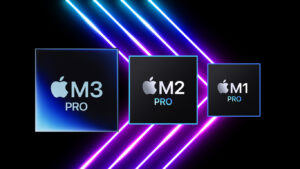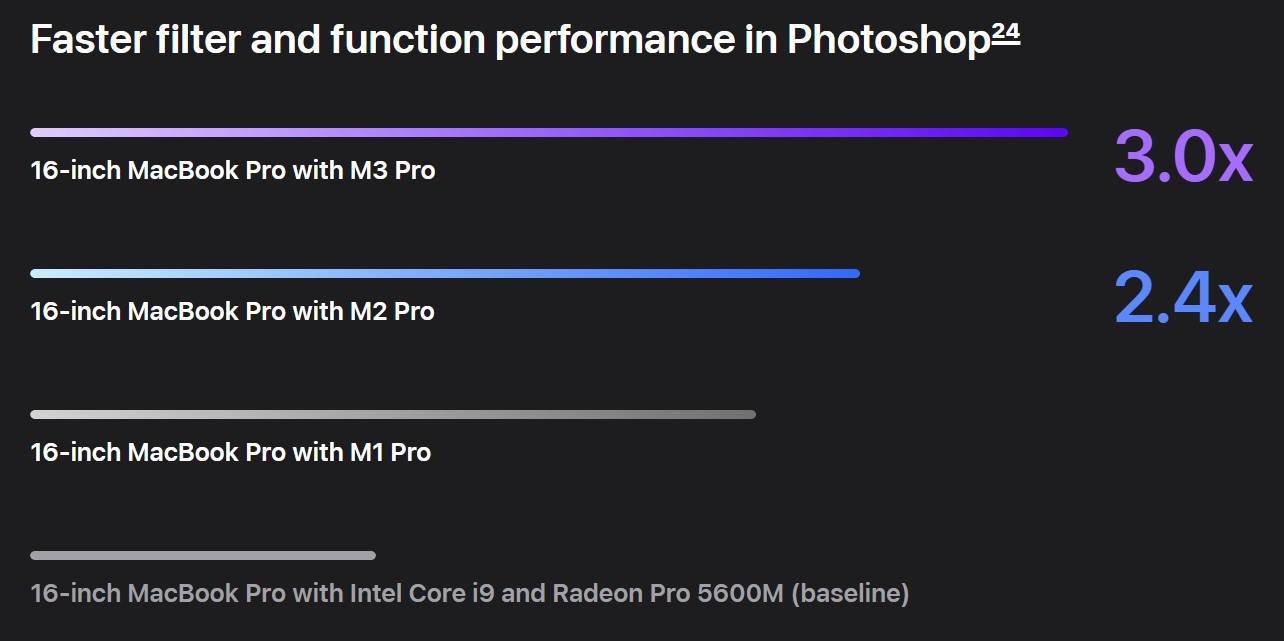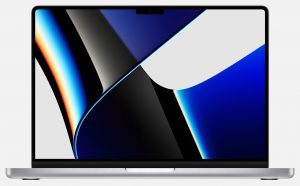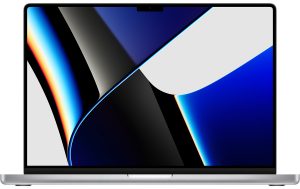[Preliminary] Performance comparison: Apple M3 Pro vs Apple M2 Pro vs Apple M1 Pro
 We got the vanilla M-series chips out of the way, now it’s time to give you a performance comparison between the three Pro chips. For 2023, there are a few shake-ups in terms of the chip structure and layout, but we’ll try to make it as simple as we possibly can. There are also some benchmark results of the new chip that just surfaced today, so we’ll make sure to include those below as well, so you can have a picture (even if it’s a bit blurry at the moment) of how things should stand with Mac devices in 2023.
We got the vanilla M-series chips out of the way, now it’s time to give you a performance comparison between the three Pro chips. For 2023, there are a few shake-ups in terms of the chip structure and layout, but we’ll try to make it as simple as we possibly can. There are also some benchmark results of the new chip that just surfaced today, so we’ll make sure to include those below as well, so you can have a picture (even if it’s a bit blurry at the moment) of how things should stand with Mac devices in 2023.
As we’ve said previously, Apple made waves with the M1 but has been chilling ever since, bringing slight year-on-year improvements. This comes at a time when Windows laptops look to be getting in on the ARM fun too, as Qualcomm, NVIDIA, and AMD are all turning towards ARM processors for thin and light laptops.
As for today, we’re comparing the M3 Pro against the M2 Pro and the M1 Pro.
You can find more about all the M-series chips here: Apple M3 Pro (12-core CPU) / Apple M3 Pro (11-core CPU) / Apple M2 Pro (12-core CPU) / Apple M2 Pro (10-core CPU) / Apple M1 Pro (10-core CPU) / Apple M1 Pro (8-core CPU)
Specs
Just from the first glance, we see a bit of a regression, as the M3 Pro offers fewer performance cores than the M2 Pro and M1 Pro. Instead, it has increased the number of E-cores, which should make the chip even more efficient, while the boost from the new architecture will still contribute to an increase in performance. There’s a decrease in GPU cores too, while the memory bandwidth is lower too. We have a theory on why that is and it goes as follows. In all previous generations of Pro and Max series chips, there really hasn’t been a difference between the Pro and Max models, except for the GPU, as the Max chips have a lot more GPU cores. For the M3 generation, Apple is finally making some changes, in order to make the Max processors feel like more than just a GPU upgrade.
| CPU | CPU Cores | GPU Cores | Memory Bandwidth | Unified Memory | Process Technology |
|---|---|---|---|---|---|
| Apple M3 Pro (6+4) | 12 cores (6 performance cores and 6 efficiency cores) | 18 cores | 150 GB/s | 16 or 36 GB LPDDR5-6400 | 3 nm |
| Apple M3 Pro (5+6) | 11 cores (5 performance cores and 6 efficiency cores) | 14 cores | 150 GB/s | 16 or 36 GB LPDDR5-6400 | 3 nm |
| Apple M2 Pro (8+4) | 12 cores (8 performance cores and 4 efficiency cores) | 19 cores | 200 GB/s | 16 or 32 GB LPDDR5-6400 | 5 nm |
| Apple M2 Pro (6+4) | 10 cores (6 performance cores and 4 efficiency cores) | 16 cores | 200 GB/s | 16 or 32 GB LPDDR5-6400 | 5 nm |
| Apple M1 Pro (8+2) | 10 cores (8 performance cores and 2 efficiency cores) | 16 cores | 200 GB/s | 16 or 32 GB LPDDR5-6400 | 5 nm |
| Apple M1 Pro (6+2) | 8 cores (6 performance cores and 2 efficiency cores) | 14 cores | 200 GB/s | 16 or 32 GB LPDDR5-6400 | 5 nm |
Performance
Apple has given us some tests (a total of 6) spanning different fields where mass computational power is needed: 3D Rendering (Maxon Redshift), Scientific analysis (MATLAB), Video editing (Premiere Pro), Medical Imaging (Horos MD), Photo editing (Photoshop), and Image processing (Affinity Photo 2). Here are all four laptops that are included in the test:
M3 Pro: 2023 MacBook Pro 16 with an M3 Pro (12-core CPU, 18-core GPU) and 36GB of RAM
M2 Pro: 2022 MacBook Pro 16 with an M2 Pro (12-core CPU, 19-core GPU) and 32GB of RAM
M1 Pro: 2021 MacBook Pro 16 with an M1 Pro (10-core CPU, 16-core GPU) and 32GB of RAM
Baseline: 2019 MacBook Pro 16 with an 8-core Core i9 CPU, 64GB of RAM, and an AMD Radeon Pro 5600M GPU with 8GB of HBM2 memory.
3D Rendering
As you can see, the M1 Pro-equipped MacBook doesn’t do that much better than the baseline, however, the M3 Pro delivers an insane increase in performance being 2.8x faster than the Core i9 and Radeon Pro 5600M combo.
Scientific analysis
In MATLAB, all Apple silicon chips are significantly ahead of the baseline, however, after the M1 Pro, we see incremental gains in performance of about 5% to 10%.
Video editing
In Premiere Pro, incremental gains is all we see, even when we jump from the Core i9 to the M1 Pro.
Medical imaging
In medical imaging, the M2 Pro is twice as fast as the Core i9-equipped MacBook Pro 16, while the M3 Pro is only 2.1x faster, which means that there isn’t that big of a jump from the M2 Pro to the M3 Pro.
Photo Editing
Moving to Photoshop, you can see that the Apple M1 Pro doubles the performance of the Core i9 MacBook Pro, however, the M2 Pro offers a small bump. What’s more interesting is that the M3 Pro offers a bigger bump, so if you’re jumping from the M1 Pro to an M3 Pro, you should feel the difference.
Image processing
Lastly, in image processing with Affinity Photo 2, The M2 Pro doubles the performance of the Core i9 system, while the M3 Pro contributes an extra 0.5x on top of that.
Verdict
From what we can see right now, we don’t believe that upgrading from an M2 Pro to an M3 Pro is a smart option. However, if you’re upgrading from an M1-based system, you should maybe consider an upgrade. If you’re feeling like your current system is starting to slow down (which is still hard to imagine, given how fast the M1 Pro and Max machines still are). And as always, if you’re looking to jump to the Apple side from a Windows device, factor in how much cash you have and pick the best possible device. If it were up to us, we’d be looking at the M1 Pro and M2 Pro-based configurations, as they’re sure to be dropping in price, so you can get a great deal on one.
As for the Dynamic caching debacle and what it could mean for the future of Apple graphics, and even GPUs as a whole, you can check out our performance comparison of the Vanilla M-series chips, which explains it as simply as possible.
All laptops with the Apple M3 Pro (12-core CPU):
All laptops with the Apple M3 Pro (11-core CPU):
All laptops with the Apple M2 Pro (12-core CPU):
All laptops with the Apple M2 Pro (10-core CPU):
All laptops with the Apple M1 Pro (10-core CPU):
All laptops with the Apple M1 Pro (8-core CPU):




















